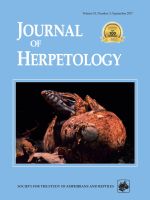The diversity of extant squamates in South America is in deep contrast to the extremely scarce knowledge of squamates from that continent during the Mesozoic, particularly regarding terrestrial lizards. Here, we provide a review of the most recent advances in the knowledge of Cretaceous lizards from South America, focusing on named species (all from Brazil). These forms included scansorial, as well as cursorial taxa, likely displaying facultative bipedalism. In the case of Crato Formation specimens, only juveniles were reported so far, which raises questions about the role of taphonomic biases and community structure. Iguanians (acrodontans and non-acrodontans), as well as scincomorphs, are known since the Aptian/Albian. All iguanians had a broad Late Cretaceous distribution that, along with findings in the Early–Middle Jurassic of India, suggests an early radiation of the group before the final break up of Laurasia and Gondwana. Gondwanan regions may have played a fundamental role in the initial history of acrodontan iguanians despite the fact that, at least in South America, only non-acrodontans and scincomorphs are known to have passed through the Cretaceous–Paleogene boundary.
How to translate text using browser tools
26 July 2017
Mesozoic Lizards from Brazil and Their Role in Early Squamate Evolution in South America
Tiago R. Simões,
Michael W. Caldwell,
Luiz C. Weinschütz,
Everton Wilner,
Alexander W. A. Kellner
ACCESS THE FULL ARTICLE

Journal of Herpetology
Vol. 51 • No. 3
September 2017
Vol. 51 • No. 3
September 2017




